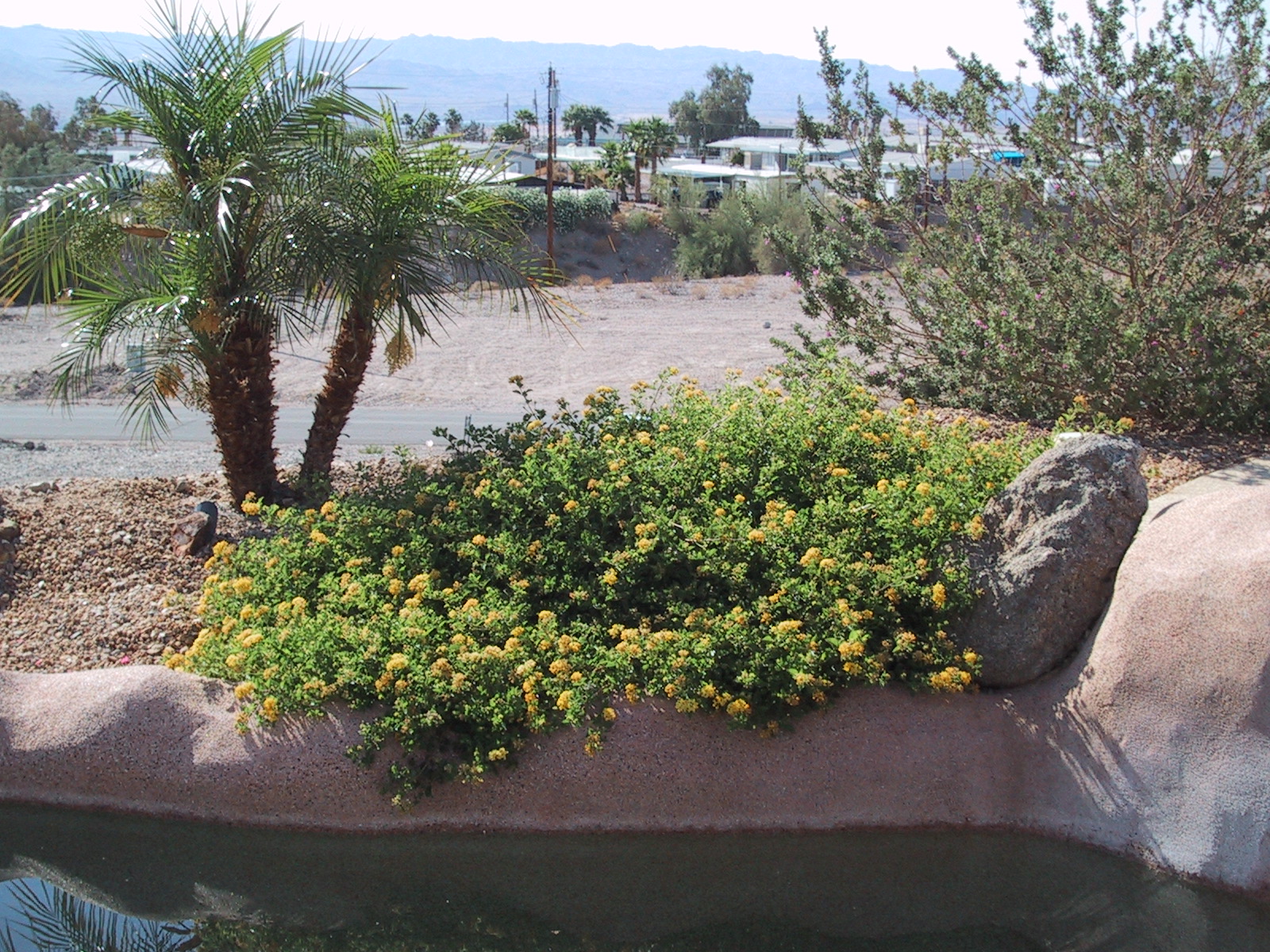Whether your thumb is green or brown, there is one plant that is a faithful grower here in Lake Havasu City, lantana (verbenaceae). Lantana is very popular here and thoroughly enjoys our climate and soil. It is a hardy, low-maintenance plant and its only need is a good pruning in January or February.
Lantana is a member of the verbena family. It grows wild in the Deep South and is considered a weed in Hawaii. The plant originated in the tropical areas of North, South, and Central America and in South Africa. Because of its origin, it provides us with color off and on all year long. It dislikes cold, and is considered an annual in cold winter climates. Here in Lake Havasu, lantana will become spindly in the wintertime but will bounce back as soon as the heat turns on; in fact it revels in it. It is tolerant of poor soil conditions (a good thing) and its water needs are low (another good thing) and it doesn’t mind alkaline (salt which is in our soil and water). Too much water or fertilizer will cut down on the blooms (gee, another good thing).
The leaves are dark green and are 3 inches or more in length with rounded tips with toothed edges and deeply veined fuzzy surfaces. The foliage has a pungent smell when touched. The flowers are quite small with dozens of blooms making up a cluster. The color palette is great. White, pink, red, yellow, purple, orange, and magenta are only the beginning. There is a lantana called “Confetti”, which has yellow, pink, and purple blossoms in a single cluster – it is really quite outstanding. “Radiance” is the lantana that is planted in front of the water feature at the Mohave County Library, which has deep reds, burgundy’s and yellows in it.
Another plus of this plant is the wildlife that it brings in. Several times a year, tiny black berries will appear resembling blackberries. These berries are poisonous to us but not to birds which will nibble on them. Along with that, the nectar of the flowers brings in hummingbirds and butterflies including the monarchs, swallowtails, and pink ladies.
There are over 150 species of lantana but there are two main species. Camara, which is a shrub, can grow upright to 6 feet and can be trimmed into low hedges or foundation shrubs. Montevidensis, which grows like a ground cover, can have branches that trail from three to six feet. This is excellent for covering banks and erosion control. So depending on your landscape design, there is a lantana that will accommodate your needs. Lantana use can be used in borders, hanging pots, and containers and is a great color accent amongst cacti. The only draw back that lantana has is that it can become invasive if planted too close to a walkway since it likes to spread out.
This is one plant that will not fail in bringing out color in the heat of summer here in the desert. The dark green foliage along with its bright colored flowers will at least make your yard feel a little cooler then it really is.
Dottie Holman is a Lake Havasu City Master Gardener. For details, call the Lake Havasu Master Gardener’s hotline at 928-753-3788, email [email protected] or see them on the first Tuesday of the month from 11 am – 1 pm at the Mohave County Library.



